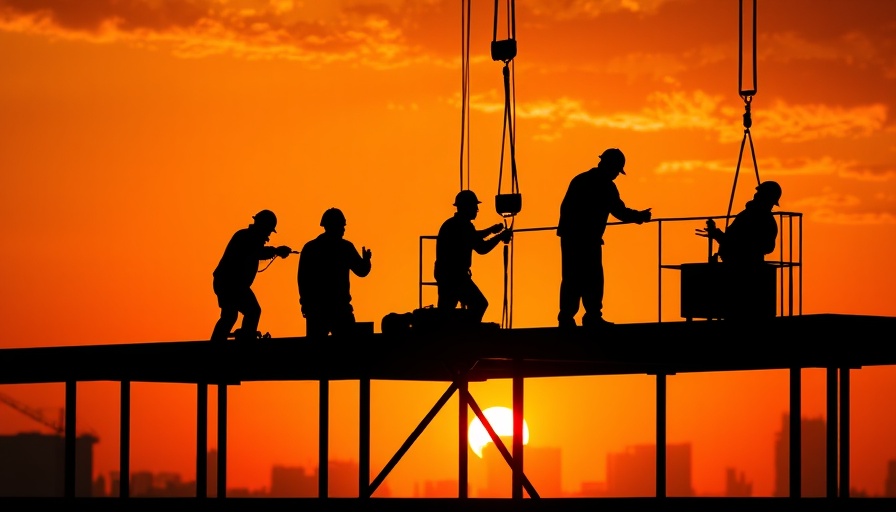
Construction Opportunities Amid Economic Uncertainty
The current landscape of the U.S. construction industry presents a unique paradox: as the economy enters a phase filled with uncertainties, opportunities emerge for savvy construction professionals. In 2025, while construction starts have seen a notable reduction of 3.5% from the previous year, forecasts predict a rebound in spending by approximately 5.2%. The factors driving this growth stem from anticipated modifications in financial regulations and prospects of interest rate reductions, essential for reviving nonresidential construction ventures.
Understanding Growth Drivers
Michael Guckes, Chief Economist at ConstructConnect, argues that lower interest rates are pivotal. He states, “Lower interest rates will function as a first and necessary step in reinvigorating nonresidential construction activity.” This scenario not only promises to boost commercial projects but is also expected to make housing more accessible. With projected spending increases of 5.7% in the nonresidential sector and a 3.6% rise in residential construction, the trajectory seems promising.
Identifying High-Potential Sectors
As construction professionals navigate these trends, certain sectors show robust potential for growth. The rapid escalation in the demand for power generation—driven largely by electric vehicles and advancements in technology—signals significant opportunities. Notably, spending on renewable energy projects like wind and nuclear has soared and is expected to reach unprecedented levels. The manufacturing construction sector is also on track for a remarkable increase of 13.4% in 2025. This shift further emphasizes a transformative direction in the construction industry, urging professionals to pivot towards projects that incorporate sustainability and technology.
The Impact of Tariffs on Construction
However, despite these encouraging forecasts, caution is warranted. The imposition of tariffs on imported goods presents a daunting challenge. Increased material costs can thwart growth initiatives, prompting companies to rethink their strategies in sourcing. Experts suggest that if domestic manufacturing becomes more appealing due to tariff implications, the ripple effects could foster a domestic construction boom.
Strategic Considerations for Construction Professionals
In isolation, these insights present a balanced outlook for the construction industry. For property developers, facility managers, and business owners, the key lies in adaptability. Embracing new technologies, pursuing diverse project portfolios, and staying informed about economic shifts can catalyze success. Engaging in industry roundtables and forums will further bolster knowledge exchange, providing professionals with various perspectives on navigating uncertainties effectively.
Conclusion: Evolving Lexicon of Opportunities
The construction landscape is in flux, shaped by multifaceted economic influences. As construction professionals brace for the possibilities ahead, acknowledging and acting upon these insights can pave the way for sustainable growth. The evolution of the industry calls for proactive measures, and as the year unfolds, the potential for success lies within each professional's ability to adapt and respond to the dynamic challenges at hand.
 Add Row
Add Row  Add
Add 




Write A Comment